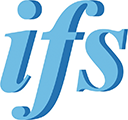
The Aluminum alloy Al-5083 belongs to the non-heat treatable group presenting a high Magnesium content and a good strength. Magnesium is then the main alloying element from Al-5083 which has a good corrosion resistance and weldability. Hence this alloy is commonly used in shipbuilding and automotive applications.
Thermal cutting processes are often used during processing. The cut method and geometry of the free cut edges have a relevant effect on the material fatigue strength, which has been already proven for steel. The influence of cut methods and edge geometry on the fatigue strength are not yet widely conducted for the Al-5083 material.
The aim of the study is to investigate the influence of cutting methods and edge geometry on the fatigue strength. The effects of the cutting process on the material structure and the quality of the cut edges are to be determined on samples cut by laser beam, plasma and water jets. Furthermore, the fatigue behavior is classified and a comparative correlation is made with the determined quality characteristics.